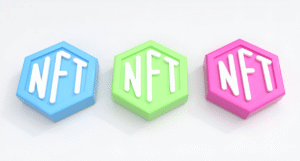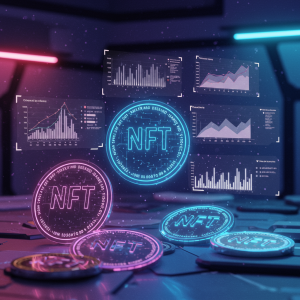NFTs and Environmental Sustainability: Moving Toward Greener Blockchain Solutions

In recent years, the explosive growth of non-fungible tokens (NFTs) has sparked vibrant discussions about their environmental consequences. While NFTs have revolutionized digital ownership and created unprecedented opportunities for creators, the energy consumption associated with traditional blockchain networks has raised legitimate environmental concerns. This post examines the ecological footprint of NFTs and explores the promising sustainable alternatives emerging in this rapidly evolving space.
Understanding the Environmental Challenge
The environmental discussion around NFTs primarily centers on energy consumption. Most first-generation NFTs operate on the Ethereum blockchain, which historically relied on a proof-of-work (PoW) consensus mechanism. This system requires massive computational power as miners compete to solve complex mathematical puzzles, consuming substantial electricity in the process.
According to research from Cambridge University, certain blockchain networks have consumed electricity equivalent to that of medium-sized countries. A single NFT transaction on older PoW systems could consume energy comparable to an average household’s weekly usage. When this energy comes from non-renewable sources, the carbon footprint becomes significant.
The ecological impact varies dramatically depending on several factors: the blockchain network used, the consensus mechanism employed, and critically, the energy sources powering the network’s infrastructure. This nuanced reality means that not all NFTs carry the same environmental burden.
The Shift Toward Sustainable Solutions
The good news is that the blockchain ecosystem is rapidly evolving toward greater sustainability. Numerous innovative approaches are reducing the environmental impact of NFTs:
Proof-of-Stake Blockchain Networks
The most transformative development has been the transition from energy-intensive proof-of-work to the significantly more efficient proof-of-stake (PoS) consensus mechanism. Ethereum’s shift to PoS through “The Merge” represented a watershed moment, reducing the network’s energy consumption by approximately 99.95%. This dramatic improvement has substantially decreased the carbon footprint of NFTs minted on Ethereum.
Layer-2 Solutions and Sidechains
These technological innovations batch multiple transactions together, processing them more efficiently while maintaining security. By reducing the computational load on the main blockchain, layer-2 solutions significantly decrease energy requirements while enhancing scalability. Projects like Polygon have gained popularity for offering energy-efficient alternatives while maintaining compatibility with major networks.
Carbon-Neutral and Eco-Friendly Blockchains
Several blockchain platforms have been designed with environmental sustainability as a core principle. Networks such as Tezos, Flow, and Algorand use alternative consensus mechanisms that require minimal energy consumption. These platforms often attract environmentally conscious creators and collectors who prioritize ecological responsibility.
Industry Response and Accountability
The NFT marketplace has demonstrated remarkable adaptability in addressing environmental criticisms. Platforms, creators, and collectors are increasingly prioritizing sustainability:
Transparent Carbon Reporting
Leading NFT marketplaces now provide transparency regarding the environmental impact of transactions. Some platforms have implemented carbon calculators and environmental impact assessments, enabling users to understand and offset their ecological footprint.
At NFTMarketo, we believe that transparency is essential for building a sustainable digital asset ecosystem. By providing clear information about the environmental implications of different blockchain networks, we empower collectors to make environmentally conscious choices.
Carbon Offset Initiatives
Many prominent NFT projects now incorporate carbon offset programs into their operations. These initiatives fund renewable energy development, reforestation efforts, and other environmental projects to neutralize the carbon footprint associated with their blockchain activities.
Community-Led Environmental Standards
Artist collectives and NFT communities have established environmental standards and best practices. These grassroots efforts encourage the adoption of eco-friendly minting options and raise awareness about sustainable alternatives.
The Future of Sustainable NFTs
The path forward for environmentally responsible NFTs involves both technological innovation and cultural shifts within the community. Several promising developments are shaping this future:
Renewable Energy Mining
Even for remaining proof-of-work operations, the transition to renewable energy sources significantly reduces environmental impact. Solar, wind, and hydroelectric power can support blockchain infrastructure while minimizing carbon emissions.
Regenerative Crypto-Economics
Emerging models aim to make blockchain activities not just carbon-neutral but environmentally positive. These systems design economic incentives that reward ecological restoration and conservation efforts through the same mechanisms that power the networks.
Enhanced Energy Efficiency
Ongoing research focuses on developing ever more efficient consensus algorithms and network architectures that further reduce energy requirements while maintaining security and decentralization.
Conclusion
The environmental impact of NFTs presents a complex challenge, but the rapid innovation within the blockchain space offers encouraging solutions. As the industry continues to mature, sustainability is becoming a central consideration rather than an afterthought.
For creators and collectors navigating this evolving landscape, the key lies in making informed choices. By supporting platforms and projects committed to environmental responsibility, the NFT community can help drive the transition toward a more sustainable blockchain ecosystem.
The future of NFTs need not come at the expense of our planet. Through thoughtful implementation of emerging technologies and conscientious participation, the digital asset revolution can align with ecological priorities, creating value while preserving our shared environment.








